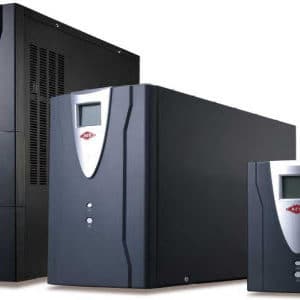uninterruptible power supply Proftech
uninterruptible power supply or uninterruptible power source (UPS) is an electrical apparatus that provides emergency power to a load when the input power source or mains power fails. A UPS differs from an auxiliary or emergency power system or standby generator in that it will provide near-instantaneous protection from input power interruptions, by supplying energy stored in batteries, supercapacitors, or flywheels. The on-battery run-time of most uninterruptible power sources is relatively short (only a few minutes) but sufficient to start a standby power source or properly shut down the protected equipment. It is a type of continual power system.
A UPS is typically used to protect hardware such as computers, data centers, telecommunication equipment or other electrical equipment where an unexpected power disruption could cause injuries, fatalities, serious business disruption or data loss. UPS units range in size from units designed to protect a single computer without a video monitor (around 200 volt-ampere rating) to large units powering entire data centers or buildings.
Features of a uninterruptible Power Supply;
UPS systems may be necessary in situations where power fluctuations or outages frequently occur because they can provide backup power circuitry that keeps vital systems operational in case the power supply is cut off. Under conditions involving short fluctuations or voltage disruption, the UPS can maintain constant power to keep loads running, and if electrical failure occurs, it activates reserve power to keep systems operating until they can be safely shut down. In addition, these UPS systems can often also reduce the risk posed by harmonic disruptions and line transients. An effective UPS usually includes several of the following features:
- Regulated output voltage with low harmonic distortion unaffected by input voltage or load changes
- An input current with reduced harmonic distortion
- A low degree of electromagnetic interference and acoustic noise
- Minimal transition times between normal and backup operations
- High levels of reliability and efficiency
- Relatively low cost, weight, and size requirements



